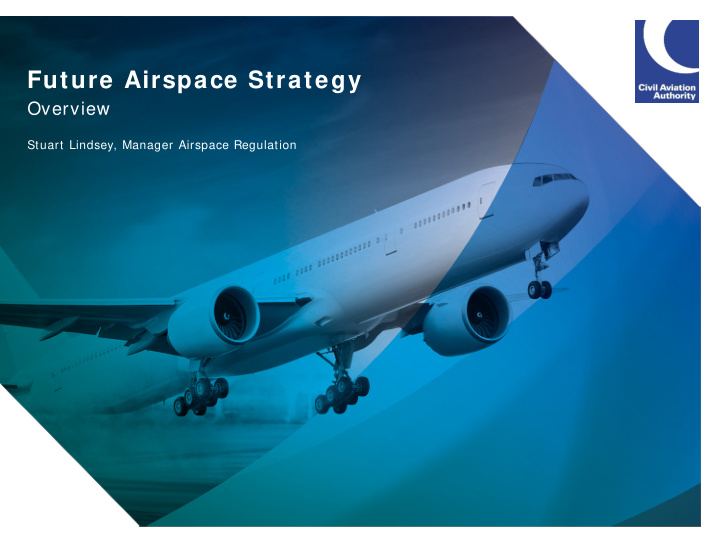



Future Airspace Strategy Overview Stuart Lindsey, Manager Airspace Regulation 1
UK FAS Background Growth in UK aviation dependent on modernisation of the Airspace System to tackle inefficiency and generate benefits for passengers, industry and environment. TODAY’S AI RSPACE I S OUTDATED – developed 40+ years ago • Frequent Route Interactions and Tactical Intervention • Traffic Bunching, Queues and Delays • Poor resilience at key nodes (Heathrow) • Expensive Air Traffic Control FAS DELI VERS ON CORE SESAR CONCEPTS • Re-design the route structure to systemised PBN standards • Improve the use of data and tools to sequence traffic and manage queues • Integrate Airports into the Air Traffic Management System (A-CDM). 2
Airspace Designed For A Different Era Today Yesterday 3
4
All Flights below FL1 9 5 – 1 day Luton Stansted Dutch airspace London Heathrow City British Belgian airspace airspace Gatw ick French airspace Slide 5 5 NATS PRIVATE
Modernising UK’s Airspace – The Need for Change Airspace arrangements 40 years old – tweaked over the years Global navigation performance standard is Performance Based Navigation – what the International Civil Aviation Organisation (ICAO) and European Aviation Safety Agency (EASA) expects. Aircraft come equipped to this standard off the production line. Old ground based infrastructure no longer being replaced ‘as is’. Provides opportunities for doing things differently CAA’s Future Airspace Strategy –safety, capacity, environment and efficiency at its heart. It is not a blueprint of an airspace design; more a shopping list of technologies and methods to be deployed. For ‘Industry’ to design and implement. 6
The FAS I ndustry Deploym ent Plan • Cross-Industry Implementation Group established to create strategic roadmap • Cross-industry Deployment Plan aligns the investments of ANSP , Airports & Airlines • Investments delivered as one pan-Region initiative with joint programme governance. FAS VFR Group Deploym ent Plan • VFR Community FAS programme to complement the industry programme • Developing a consistent approach to airspace change • Identifying priorities for the VFR community. 7
Performance improvements expected across every phase of flight 8
FAS Facilitation Fund Project I nvestm ents Project Sponsor Stage Advanced-FUA CONOPS NERL Project started PBN Research Project (DEP2) NERL Project Started Fund Admin NERL Project Started AFUA - LARA FOST Trial MoD Project Started FASVIG Programme VFR Community Project Started PBNRP Enhanced Route Spacing CAA Project Started APV deployments (50% co-funding) DSG / AOA Project Started DPI Roll-Out Transport Systems Catapult Project Started A-CDM CONOPS Transport Systems Catapult Project started PBNRP-Test database EZY on behalf of the Lead Carrier group Project Started Comms – Strategic case for FAS ; video BATA Project Started FASIIG Comms Role FASIIG Co-Chairs Project Started PBNRP-Third Party Simulator Costs Airlines/NERL Project Started LDLCA Electronic Surveillance Trial HIAL Project Proposal AFUA State Project Proposal Development Low Power ADS Transponder Device trial NERL Proposal Development D-ATIS FASIIG Proposal Development Departures and Arr ival Transitions AoA Proposal Development 9
Recommend
More recommend